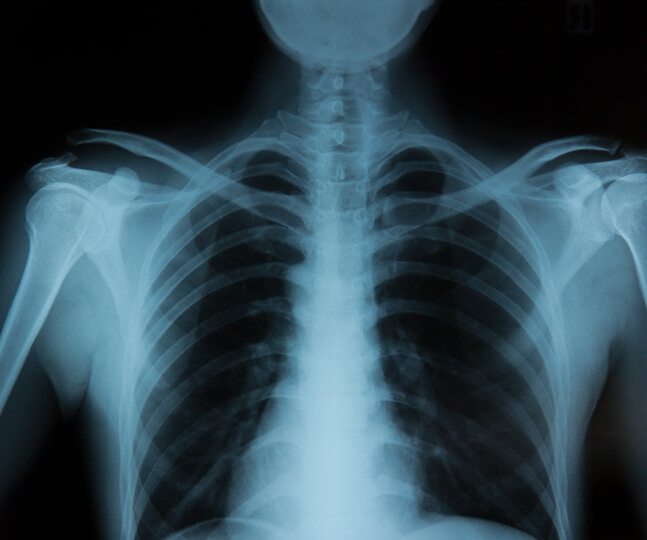In medical diagnostics, new imaging methods have changed how doctors find and treat different conditions. Two important ones are DEXA scans and X-rays. They’re both important in medical imaging, but they’re used for different reasons and have their qualities. Knowing how they’re different is important for both doctors and patients to choose the best screening method. In this blog, we’ll look at seven key differences between DEXA scans and X-rays to help choose the right screening for different healthcare needs.
-
Principle of Imaging
- X-rays use radiation to make pictures of what’s inside the body. As the X-ray beams go through, different tissues absorb them in different ways, which creates shadows and forms the X-ray picture. This method is really good for seeing dense things like bones and finding problems like fractures or tumours.
- DEXA scan in Campbelltown uses a special kind of X-ray called “dual-energy” X-rays. These scans measure how bone and soft tissue absorb these X-rays to check bone mineral density (BMD). Unlike regular X-rays, DEXA scans are mainly for diagnosing osteoporosis and checking the risk of fractures by measuring bone density.
-
Application and Purpose:
- X-rays are versatile and used in many ways for diagnosis, like finding fractures, checking joints, and spotting issues in organs like the lungs and abdomen. They’re usually the first choice for imaging in emergencies and orthopaedic situations because they’re fast and give quick results.
- DEXA scans are made for checking bone health and finding issues like osteoporosis. They give exact measurements of bone mineral density (BMD) in important areas like the spine, hip, and forearm. DEXA scans are really important for checking the risk of fractures, seeing if treatments are working, and deciding on ways to stop osteoporotic fractures.
-
Radiation Exposure:
- Regular X-rays use radiation, which can be risky, especially with repeated exposure. However, the amount of radiation used in X-rays is usually low and safe for diagnosis. The important information doctors get from X-rays is usually more valuable than the small risks from radiation.
- DEXA scan in Campbelltown uses a small amount of radiation, much less than regular X-rays. Because of this, they’re better for checking conditions like osteoporosis over a long time, especially for groups like older women after menopause who might be more vulnerable.
-
Image Resolution and Detail:
- X-ray in Campbelltown are great for seeing bones clearly and finding fractures. They’re really good at showing if there are any problems with how bones are shaped. However, they might not be as good at finding small changes in bone density, especially if someone has osteoporosis in its early stages.
- DEXA scans are really good at showing bone density in detail. They do this by measuring how X-rays are absorbed at two different energy levels, which helps find even small changes that might mean someone has osteoporosis. This detailed imaging is important for finding problems early and stopping fractures from happening.
-
Targeted Areas of Assessment:
- X-rays can take pictures of many parts of the body, like bones, joints, soft tissues, and organs. They’re often used in emergencies and orthopaedic clinics to check for both sudden injuries and long-term problems.
- DEXA scans look only at bone density in certain areas like the spine, hip, and forearm. These places are common spots for fractures in osteoporosis, so checking them helps find the risk of fractures and see if treatments are working.
-
Clinical Utility and Interpretation:
- Doctors or radiologists who know a lot about medical imaging look at X-ray results. They check if bones are lined up right, find fractures, and spot any strange things that might mean a bigger problem. These experts write detailed reports to help decide on treatment and care.
- DEXA scan results are usually given as T-scores and Z-scores. T-scores compare bone density to healthy young adults, while Z-scores compare it to people of the same age and sex. These scores help doctors understand bone health and decide if treatment or more tests are needed. Doctors look at DEXA results along with a person’s medical history and risks to plan how to prevent and treat osteoporosis for that individual.
-
Cost Considerations:
- X-ray in Campbelltown are easily accessible and usually cheaper than DEXA scans. The price of an X-ray can vary based on factors like the facility, location, and insurance coverage. X-rays are usually the first choice for evaluating sudden injuries and deciding on immediate treatment because they are readily available and cost-effective.
- DEXA scans are typically pricier than standard X-rays because they need specialised equipment and expertise for both conducting and interpreting the scans. Although more expensive, DEXA scans are often seen as a valuable investment in preventive healthcare, especially for those prone to osteoporosis or fractures.
Conclusion
Choosing between DEXA scans and X-rays requires understanding their distinct applications and strengths. DEXA scans provide accurate measurements of bone density, crucial for diagnosing osteoporosis and assessing fracture risk, while X-rays excel at quickly evaluating acute trauma and fractures. Healthcare providers consider factors such as clinical indication and patient demographics when selecting the appropriate screening technique.
Customising imaging options for each patient improves diagnostic accuracy and treatment outcomes. Educating patients about these tests enables them to participate in their care decisions effectively. Understanding the differences between DEXA scans and X-rays optimises medical imaging use for clearer diagnoses, better treatment, and healthier patients overall.
As you navigate medical imaging options like X-rays and DEXA scans, CareScan provides high-quality radiology services at reasonable prices, ensuring you get the diagnostics and treatments you require without overstretching your budget.





